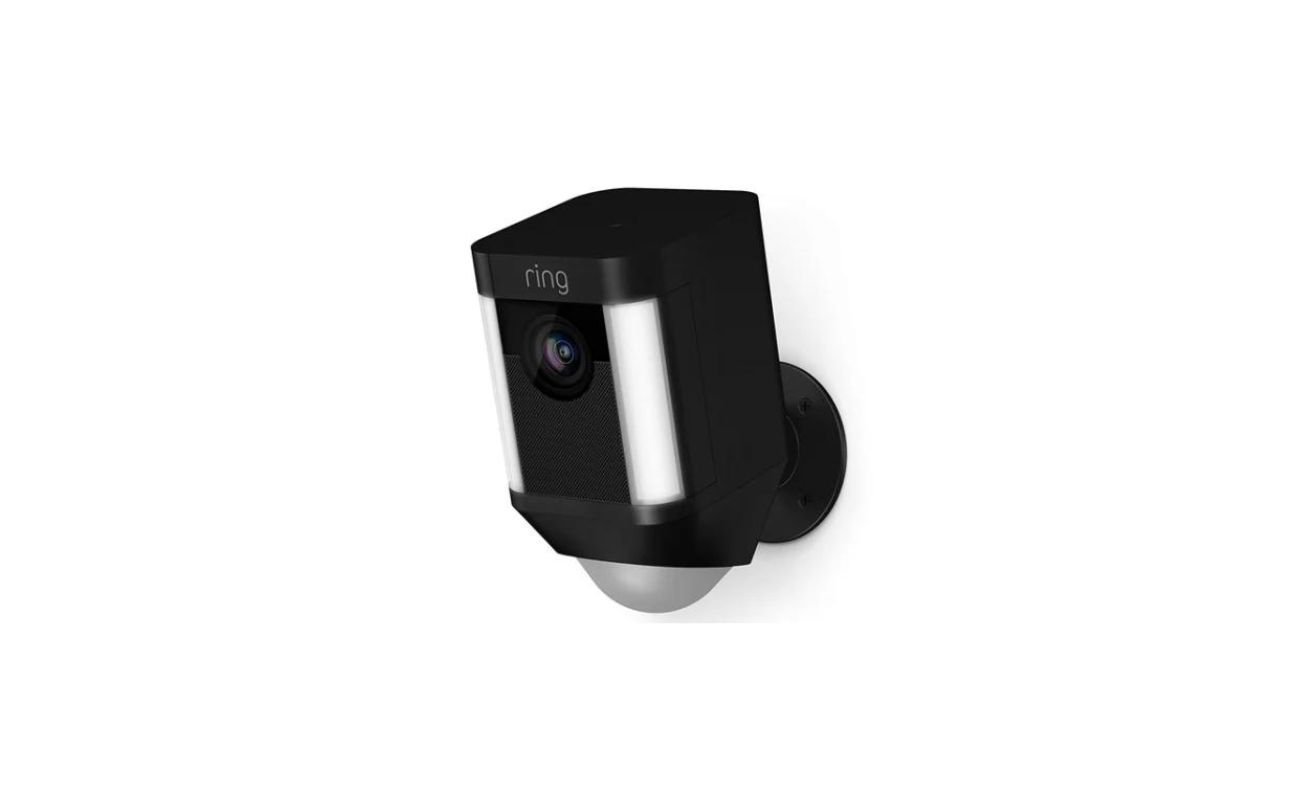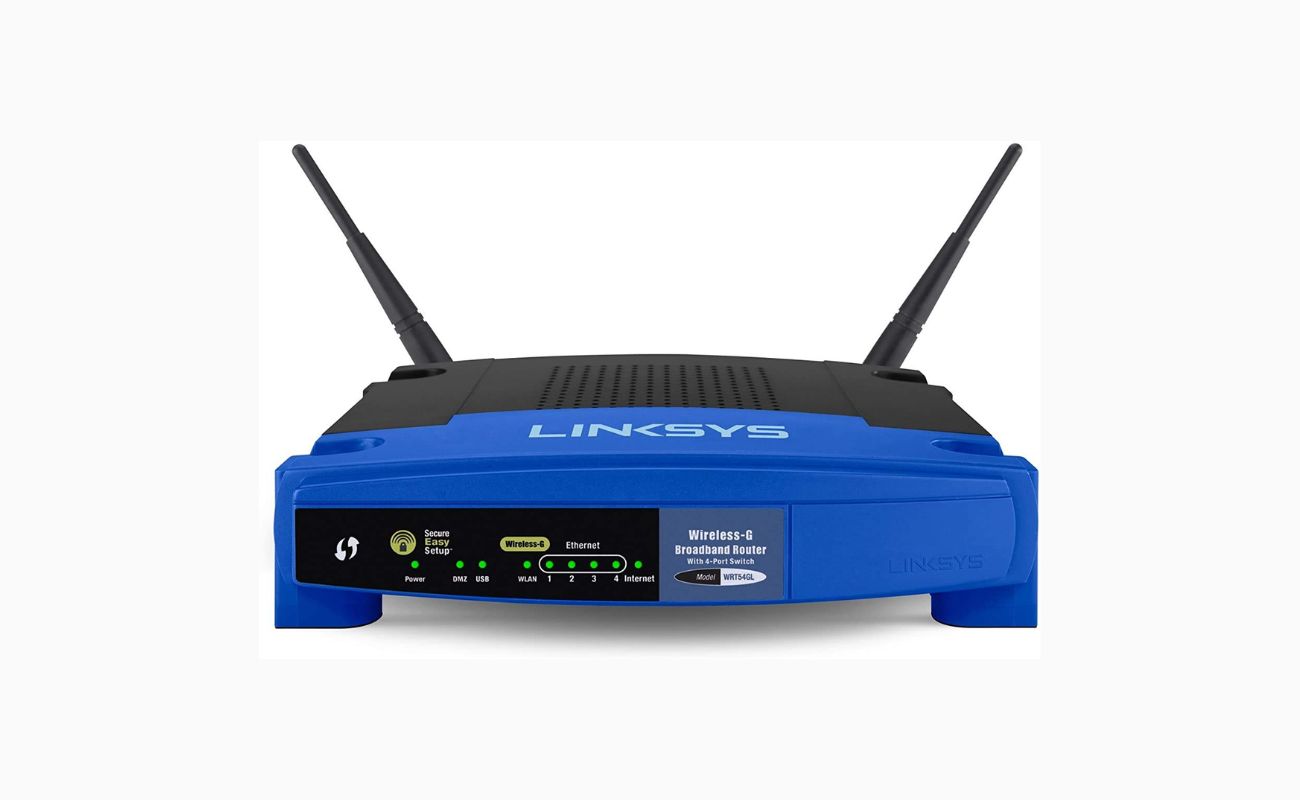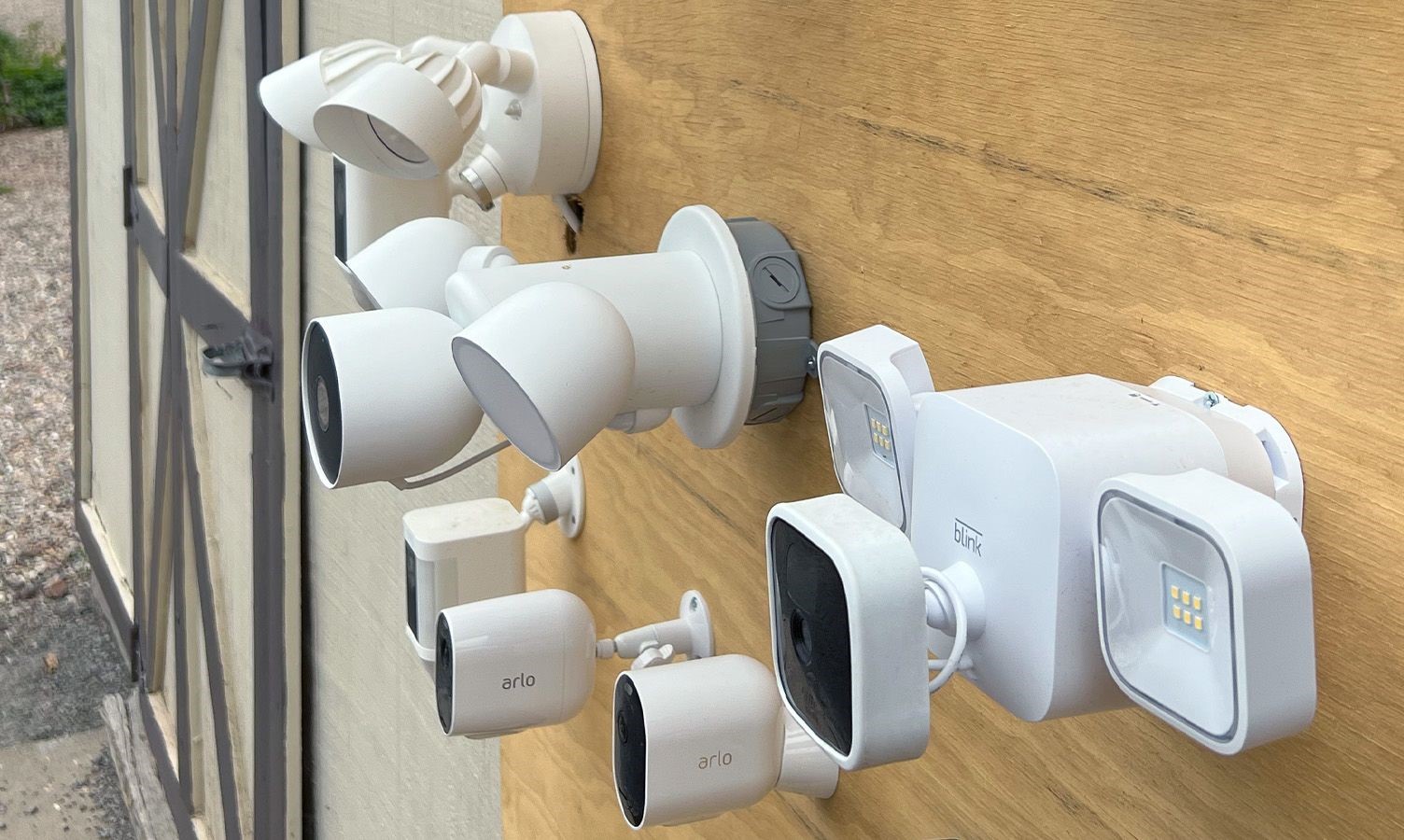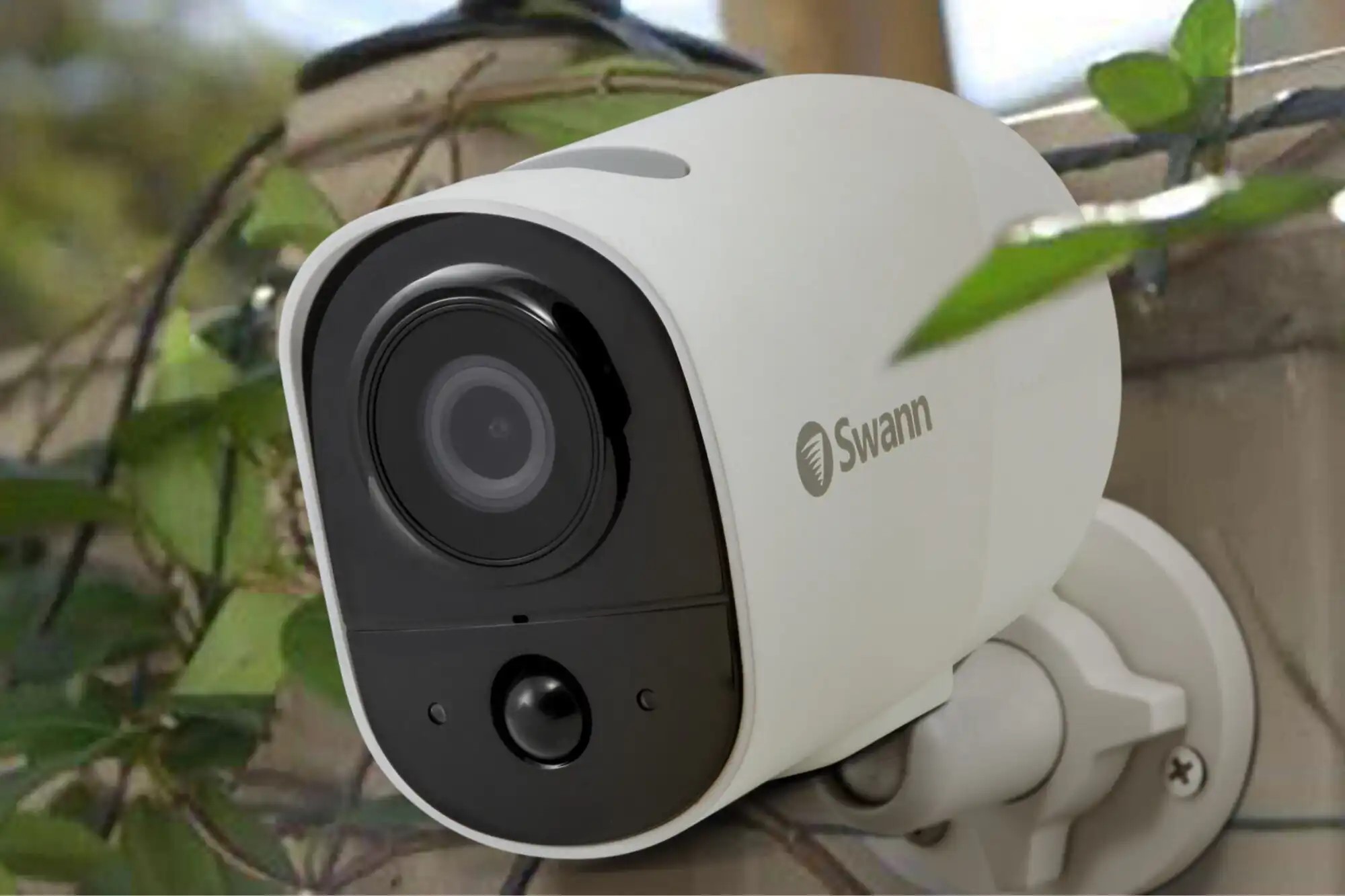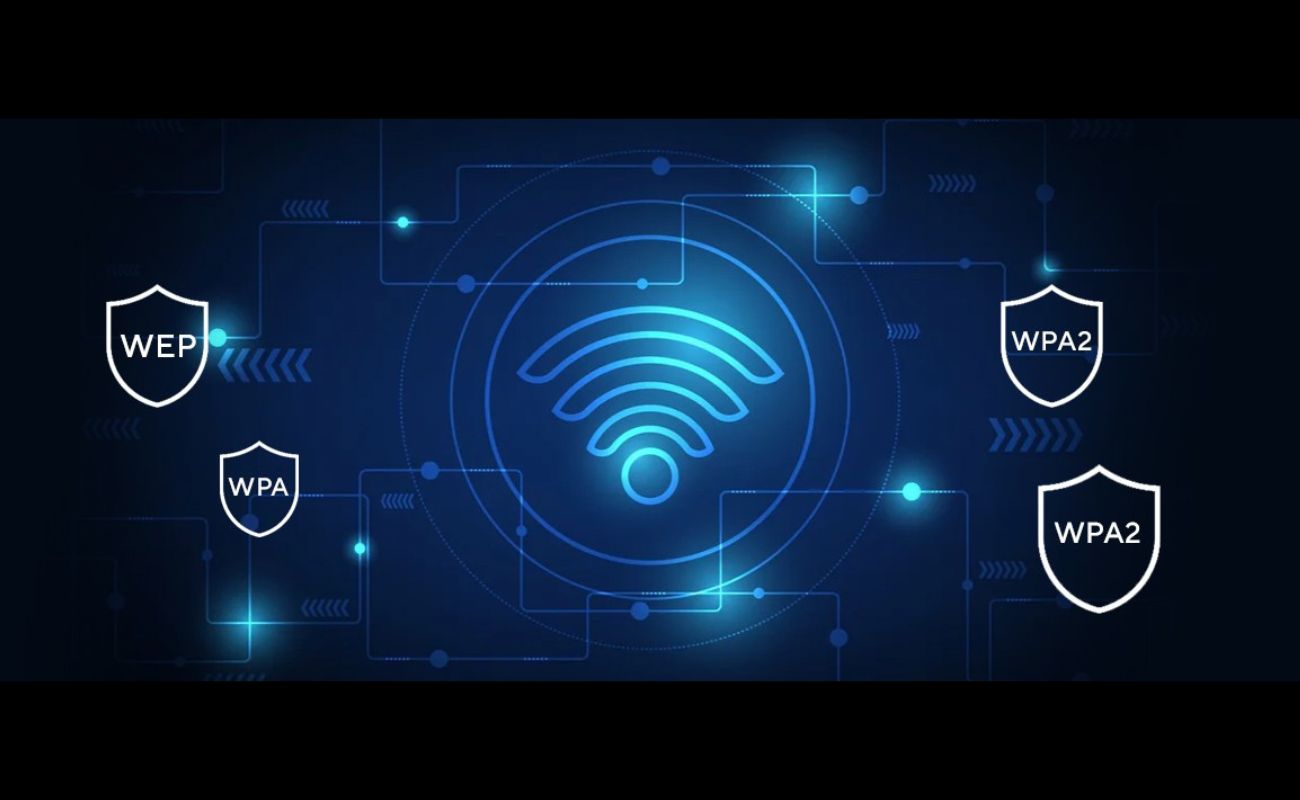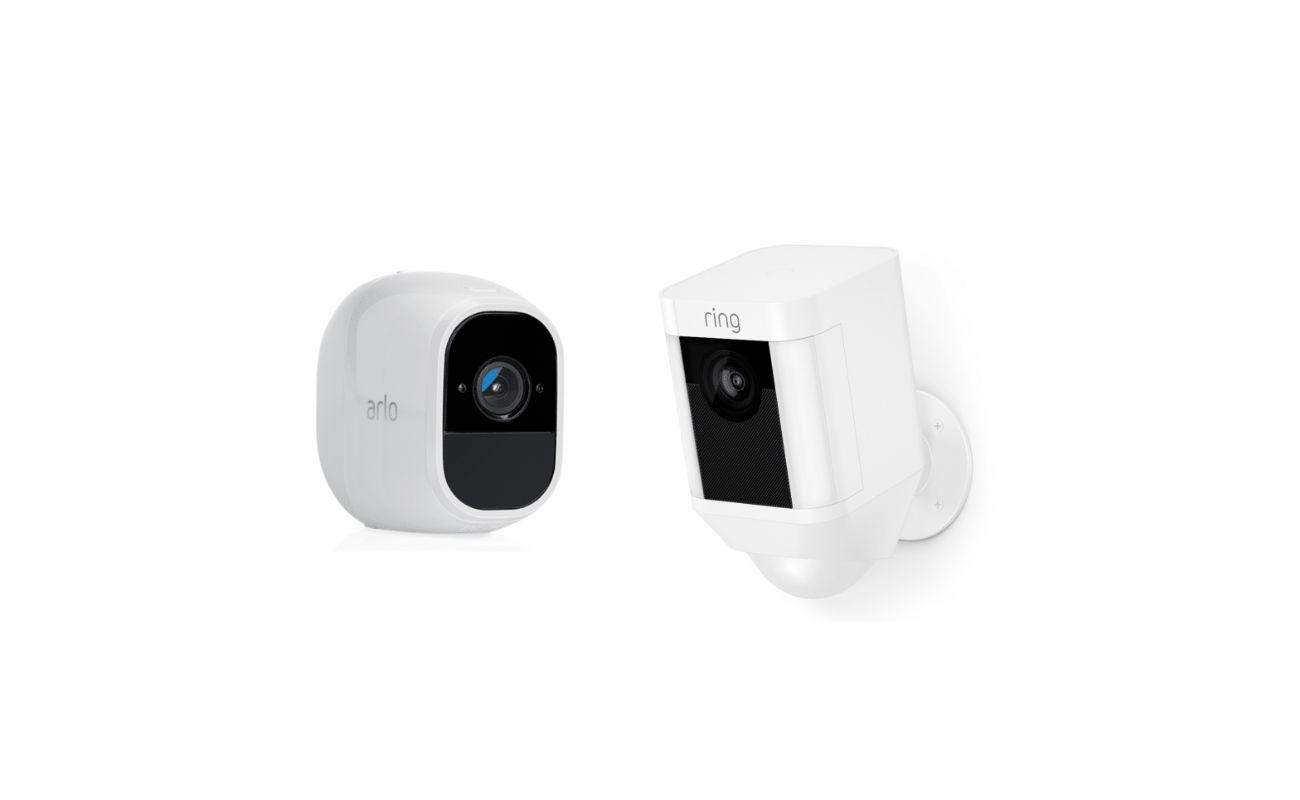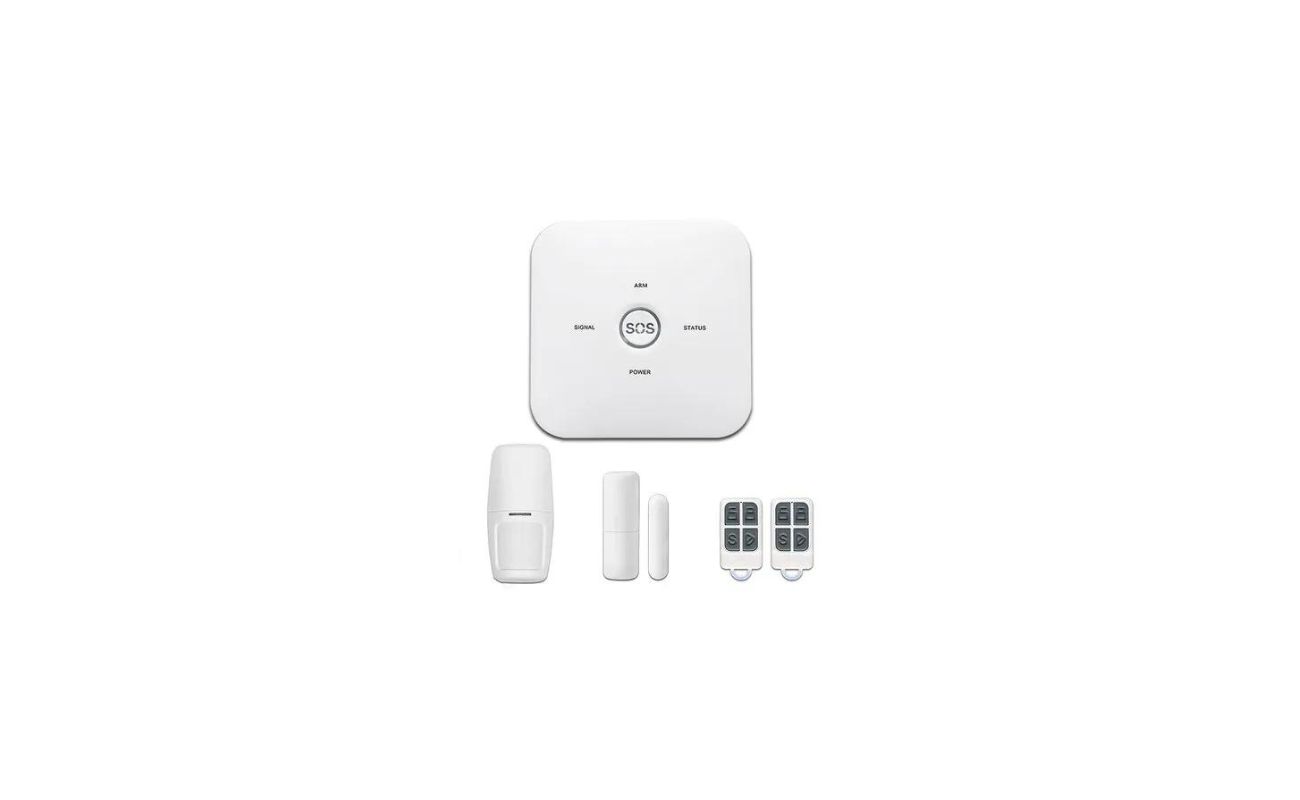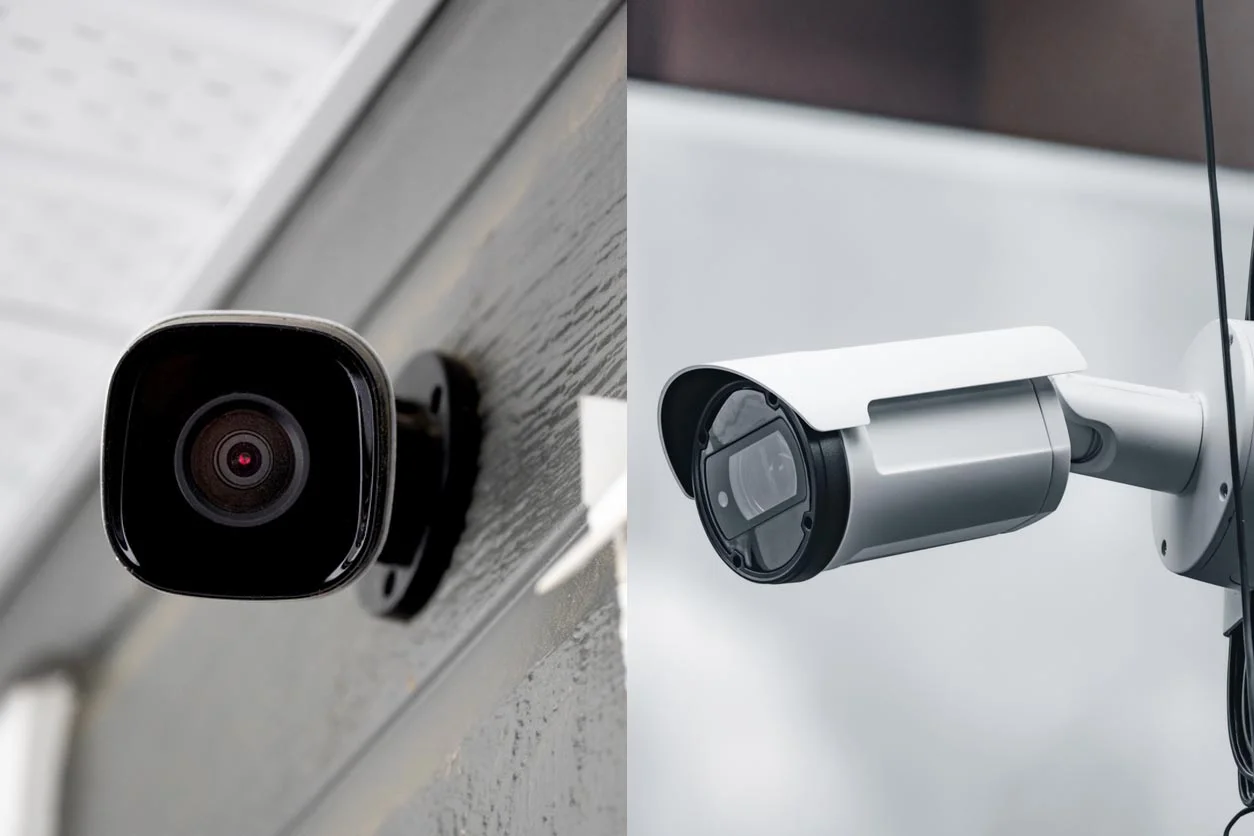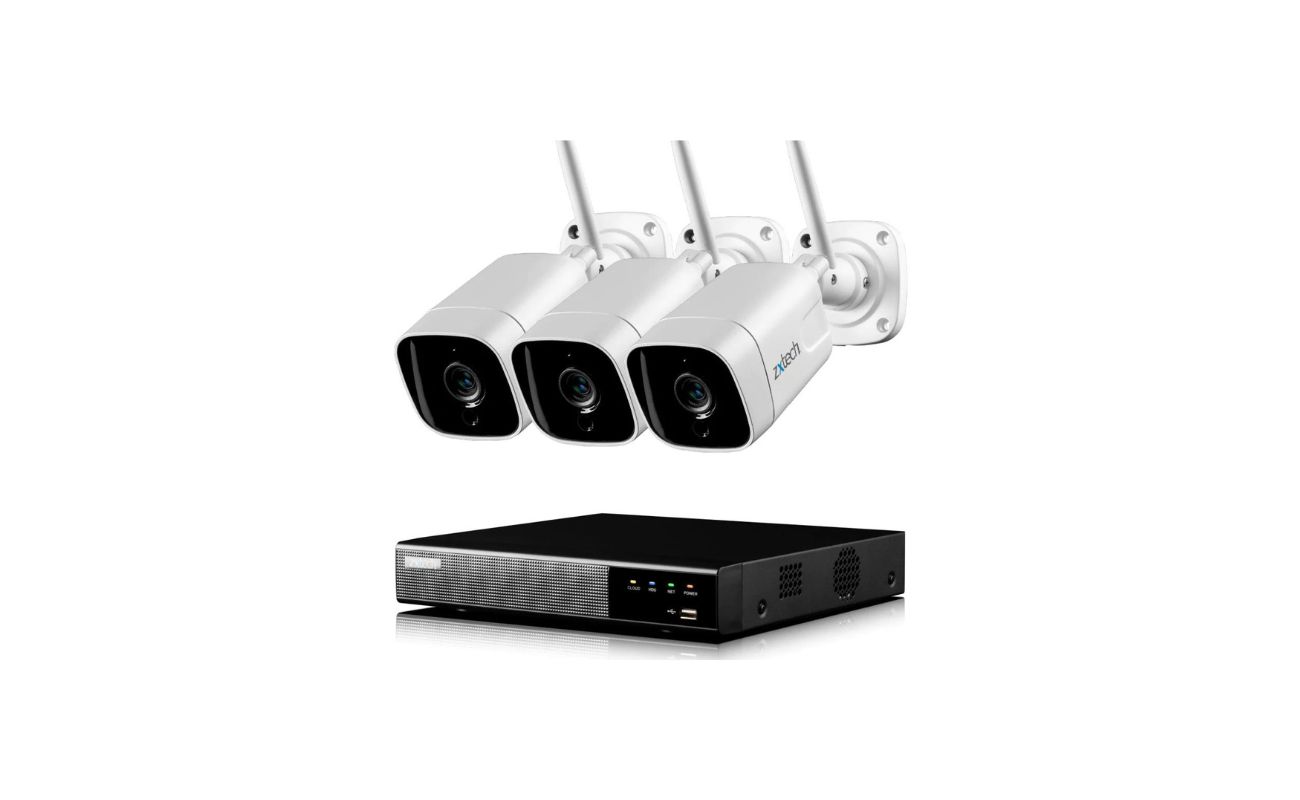Home>Home Security and Surveillance>What Are The Three Generations Through Which Wireless Security Has Progressed?


Home Security and Surveillance
What Are The Three Generations Through Which Wireless Security Has Progressed?
Modified: March 6, 2024
Discover how wireless security has evolved through three generations, ensuring advanced protection for your home with the latest home security and surveillance systems.
(Many of the links in this article redirect to a specific reviewed product. Your purchase of these products through affiliate links helps to generate commission for Storables.com, at no extra cost. Learn more)
Introduction
Welcome to the world of wireless security and surveillance! In the ever-evolving landscape of home security, wireless technology has played a vital role in revolutionizing the way we protect our homes and loved ones. From the early days of wired equivalent privacy to the advanced systems of today, wireless security has progressed through three major generations, each bringing new features and enhancements to ensure the utmost safety and peace of mind.
In this article, we will explore the three generations of wireless security, highlighting their unique characteristics, advancements, and the challenges they aimed to overcome. So, let’s dive in and discover the evolution of wireless security systems.
Key Takeaways:
- Wireless security has evolved through three generations – WEP, WPA, and WPA2. Each generation addressed vulnerabilities, with WPA2 offering the strongest encryption and enhanced security features for protecting wireless networks.
- WPA2 introduced AES encryption, dynamic key generation, and improved authentication, making it highly secure. Staying updated with security measures like WPA3 is crucial to safeguard wireless networks against evolving threats.
First Generation of Wireless Security: Wired Equivalent Privacy (WEP)
The first generation of wireless security brought forth the Wired Equivalent Privacy (WEP) protocol. Developed in the late 1990s, WEP aimed to provide a level of security in wireless networks that was comparable to the security in wired networks.
WEP operated by encrypting the data transmitted over the wireless network using a pre-shared key. This encryption ensured that unauthorized parties could not intercept and decipher the data. However, WEP had several significant shortcomings that contributed to its ultimate downfall.
One of the major weaknesses of WEP was its use of a 24-bit Initialization Vector (IV) value, which was too short to securely encrypt the data. This made it vulnerable to attacks such as statistical analysis, leading to the discovery of the WEP key. Additionally, WEP used a static encryption key, which meant that the same key was used for all devices on the network. This lack of frequent key rotation made it easier for attackers to crack the encryption.
Furthermore, WEP lacked user authentication, meaning that anyone with knowledge of the network’s key could access the network. This made it susceptible to unauthorized access and eavesdropping. The combination of these vulnerabilities significantly compromised the security of WEP and rendered it ineffective against potential attacks.
Despite its limitations, WEP was widely adopted due to its early introduction and the absence of alternative security protocols at the time. However, as the flaws of WEP became increasingly apparent, it became clear that a more robust and secure solution was needed.
Shortcomings of WEP
While the Wired Equivalent Privacy (WEP) protocol was a significant step in the evolution of wireless security, it had several critical shortcomings that made it ineffective against sophisticated attacks. These weaknesses led to the development of more secure generations of wireless security protocols.
One of the main weaknesses of WEP was its insufficient key length. WEP used a 24-bit Initialization Vector (IV) value, which was too short to provide strong encryption. This made it vulnerable to attacks that could exploit patterns in the IV values and eventually discover the encryption key. Additionally, WEP used a static encryption key, meaning that the same key was used for all devices on the network. This lack of key rotation, combined with the short IV length, made it easier for attackers to crack the encryption.
Another significant flaw of WEP was its susceptibility to replay attacks. In a replay attack, an attacker captures valid network traffic and replays it at a later time to gain unauthorized access. WEP did not have proper mechanisms in place to prevent or detect replay attacks, making it easy for attackers to exploit this vulnerability.
Furthermore, WEP lacked built-in user authentication. This meant that anyone with knowledge of the network’s key could access the network, regardless of their identity or authorization. This made WEP networks vulnerable to unauthorized access and eavesdropping by malicious individuals.
Additionally, WEP did not provide any mechanisms for secure key management. There was no built-in way to distribute or revoke encryption keys, making it difficult to manage and secure the network effectively.
Overall, these shortcomings made WEP an insecure and unreliable wireless security protocol. As attacks on WEP became more sophisticated and the limitations of the protocol became apparent, it became clear that a new and improved wireless security solution was necessary.
Second Generation of Wireless Security: Wi-Fi Protected Access (WPA)
The flaws and vulnerabilities of the Wired Equivalent Privacy (WEP) protocol paved the way for the development of the second generation of wireless security: Wi-Fi Protected Access (WPA). Introduced in 2003, WPA aimed to address the shortcomings of WEP and provide stronger encryption and enhanced security features.
WPA implemented the Temporal Key Integrity Protocol (TKIP) as its encryption algorithm. TKIP improved upon the encryption strength of WEP by introducing the use of dynamic encryption keys. These keys were generated for every individual data packet, making it significantly more difficult for attackers to crack the encryption and gain unauthorized access to the network.
One of the key improvements introduced with WPA was the implementation of the 802.1X authentication framework. This framework allowed for more robust user authentication and prevented unauthorized devices from accessing the network. It also enabled the use of backend authentication servers, such as RADIUS servers, to authenticate users and ensure secure network access.
Another important feature of WPA was the introduction of the Message Integrity Check (MIC). The MIC provided protection against data integrity attacks by verifying the integrity of the data packets transmitted over the network. This added layer of security ensured that any unauthorized modifications to the data could be detected and prevented.
WPA also addressed the weak key management issue of WEP by implementing the use of a pre-shared key (PSK) or a Wi-Fi Protected Setup (WPS) PIN. With the PSK mode, the network administrator could set a strong and unique passphrase that would be shared among all authorized devices. The WPS PIN mode allowed for easy and secure setup of the network by using a numeric PIN.
Overall, Wi-Fi Protected Access (WPA) was a significant improvement over WEP in terms of security and encryption. It provided stronger encryption with dynamic encryption keys, enhanced user authentication, and improved data integrity. However, as technology continued to evolve, the need for even stronger security measures led to the development of the third generation of wireless security: WPA2.
When learning about the three generations of wireless security, it’s important to understand the evolution from WEP to WPA and WPA2, and now to WPA3. Each generation has improved encryption and security protocols to better protect wireless networks.
Improvements Introduced with WPA
Wi-Fi Protected Access (WPA), the second generation of wireless security, brought significant improvements over the previous Wired Equivalent Privacy (WEP) protocol. These improvements aimed to enhance the overall security and robustness of wireless networks.
One of the key improvements introduced with WPA was the implementation of the Temporal Key Integrity Protocol (TKIP) encryption algorithm. TKIP addressed the weaknesses of WEP by dynamically generating encryption keys for each data packet transmitted over the network. With this dynamic key generation, WPA effectively mitigated the vulnerabilities associated with static encryption keys, making it much harder for attackers to crack the encryption and gain unauthorized access.
Another important enhancement introduced with WPA was the implementation of the 802.1X authentication framework. This framework allowed for more secure user authentication by enabling the use of backend authentication servers, such as Remote Authentication Dial-In User Service (RADIUS) servers. With 802.1X, users had to provide valid credentials to access the network, preventing unauthorized devices from connecting.
With WPA, the Message Integrity Check (MIC) was introduced to ensure the integrity of the data transmitted over the network. The MIC provided protection against data integrity attacks, detecting any unauthorized modifications to the data packets. By verifying the integrity of the data, WPA ensured the reliability and authenticity of the information exchanged within the network.
Another significant improvement was the introduction of robust key management. WPA allowed for the use of pre-shared keys (PSK) or Wi-Fi Protected Setup (WPS) PIN. With PSK, network administrators could set a strong passphrase that would be shared among authorized devices. This eliminated the need for complex and time-consuming key distribution methods. The WPS PIN mode provided an easy and secure way to set up the network by using a numeric PIN.
Overall, the improvements introduced with WPA strengthened the security of wireless networks. The dynamic encryption keys, enhanced user authentication, and data integrity checks made it significantly more challenging for attackers to compromise the network’s security. However, as technology continued to advance and new vulnerabilities emerged, the need for further improvements led to the development of the third generation of wireless security: WPA2.
Third Generation of Wireless Security: WPA2
As technology continued to evolve, so did the need for stronger security measures in wireless networks. This led to the development of the third generation of wireless security: Wi-Fi Protected Access 2 (WPA2). Introduced in 2004, WPA2 aimed to build upon the foundations of WPA and provide even stronger encryption and enhanced security features.
WPA2 utilizes the Advanced Encryption Standard (AES) algorithm for encryption, which is considered highly secure and robust. AES replaced the Temporal Key Integrity Protocol (TKIP) used in WPA, offering more advanced encryption capabilities. With AES, data packets are encrypted using a 128-bit or 256-bit key, significantly increasing the complexity of cracking the encryption.
One of the key advancements introduced with WPA2 is the implementation of Counter Mode with Cipher Block Chaining Message Authentication Code Protocol (CCMP). CCMP is a more efficient and secure method of providing data confidentiality, integrity, and authentication. It ensures that data transmitted over the network remains protected from unauthorized access and modifications.
WPA2 also supports the 802.1X authentication framework, allowing for strong user authentication through backend servers such as RADIUS. This ensures that only authorized users with valid credentials can access the network, adding an extra layer of security against unauthorized access.
Another significant improvement of WPA2 lies in its key management system. With WPA2, the use of pre-shared keys (PSK) remains an option, providing a convenient method for small networks. Additionally, WPA2 introduces the use of Extensible Authentication Protocol (EAP), which enables more robust and secure authentication mechanisms, such as digital certificates and 802.1X with a RADIUS server.
WPA2 also addresses vulnerabilities related to packet replay attacks by implementing the use of a unique packet identifier called the Replay Counter. This counter ensures that captured packets cannot be replayed to gain unauthorized access to the network.
Overall, WPA2 represents a significant leap forward in wireless security. Its utilization of AES encryption, CCMP, enhanced authentication frameworks, and improved key management provide a robust and highly secure solution for protecting wireless networks. While WPA2 has been widely adopted as the standard for wireless security, it is important to stay up-to-date with any emerging security technologies to ensure the ongoing safety of our wireless networks.
Enhanced Features and Key Advancements of WPA2
WPA2, the third generation of wireless security, introduced several enhanced features and key advancements over its predecessors. These improvements were aimed at providing even stronger encryption, enhanced authentication, and robust security measures to safeguard wireless networks.
One of the major enhancements of WPA2 is the implementation of the Advanced Encryption Standard (AES) algorithm. AES replaced the Temporal Key Integrity Protocol (TKIP) used in WPA, offering a higher level of encryption. AES uses a 128-bit key for encryption, providing stronger protection against unauthorized access and data breaches. In more recent implementations, WPA2 also supports the use of a 256-bit encryption key, further improving the security of wireless networks.
Another key advancement in WPA2 is the use of the Counter Mode with Cipher Block Chaining Message Authentication Code Protocol (CCMP). CCMP is a more efficient and secure encryption method than TKIP, providing confidentiality, integrity, and authentication for data packets transmitted over the network. It ensures that data remains protected from unauthorized access and modifications, adding an extra layer of security to wireless communication.
WPA2 also includes improvements in key management. While WPA2 still supports the use of pre-shared keys (PSK) for smaller networks, it introduces the use of Extensible Authentication Protocol (EAP) and enterprise-grade authentication methods for larger networks. EAP enables more robust authentication mechanisms, such as digital certificates and 802.1X with a RADIUS server, ensuring strong user authentication and preventing unauthorized access to the network.
Furthermore, WPA2 addresses the vulnerability of packet replay attacks by incorporating a unique packet identifier known as the Replay Counter. The Replay Counter ensures that captured packets cannot be replayed to gain unauthorized access to the network, mitigating the risk of unauthorized data access and maintaining the integrity of wireless communication.
In addition, WPA2 provides better protection against brute-force attacks by implementing lockout policies. If an attacker tries multiple incorrect authentication attempts, WPA2 can temporarily lock them out, preventing continuous attempts to crack the encryption key.
Overall, the enhanced features and key advancements of WPA2 make it a highly secure wireless security protocol. Its utilization of AES encryption, CCMP, improved key management, and protection against attacks offer robust security measures to defend against unauthorized access and maintain the confidentiality and integrity of wireless networks.
It is important to note that regular updates and patches should be applied to wireless devices to ensure the highest level of security. Additionally, newer security protocols like WPA3 are being developed to further strengthen wireless network security in the face of ever-evolving threats.
Conclusion
The evolution of wireless security and surveillance has brought about significant advancements in protecting our homes and ensuring the safety of our loved ones. The three generations of wireless security protocols – Wired Equivalent Privacy (WEP), Wi-Fi Protected Access (WPA), and WPA2 – have each played a crucial role in improving the security of our wireless networks.
WEP, the first generation of wireless security, laid the foundation but proved to be vulnerable to various attacks due to its short encryption key length and lack of secure key management. These shortcomings led to the development of WPA, the second generation, which introduced stronger encryption with dynamic key generation, enhanced user authentication, and improved data integrity checks.
Building upon the strengths of WPA, WPA2 introduced even stronger encryption with the implementation of the AES algorithm, further enhancing the confidentiality, integrity, and authenticity of data transmission. WPA2 also brought improvements in authentication mechanisms, key management, and countermeasures against replay attacks, providing a highly secure and robust wireless security solution.
In conclusion, the progression from WEP to WPA and WPA2 represents the ongoing efforts to evolve and address the vulnerabilities discovered in wireless security protocols. Each generation has introduced new features and advancements, fortifying the protection of our wireless networks against various threats.
However, it is important to note that technology is constantly evolving, and new security challenges may arise. Staying proactive in implementing the latest security measures, such as regularly updating firmware, utilizing strong passwords, and adopting emerging security protocols like WPA3, will ensure that our wireless networks remain secure against potential risks.
By understanding the evolution of wireless security and surveillance, we can make informed decisions when it comes to protecting our homes and leveraging the benefits of wireless technology. With a secure wireless network, we can enjoy the convenience, flexibility, and peace of mind that wireless security and surveillance systems bring to our lives.
Frequently Asked Questions about What Are The Three Generations Through Which Wireless Security Has Progressed?
Was this page helpful?
At Storables.com, we guarantee accurate and reliable information. Our content, validated by Expert Board Contributors, is crafted following stringent Editorial Policies. We're committed to providing you with well-researched, expert-backed insights for all your informational needs.
